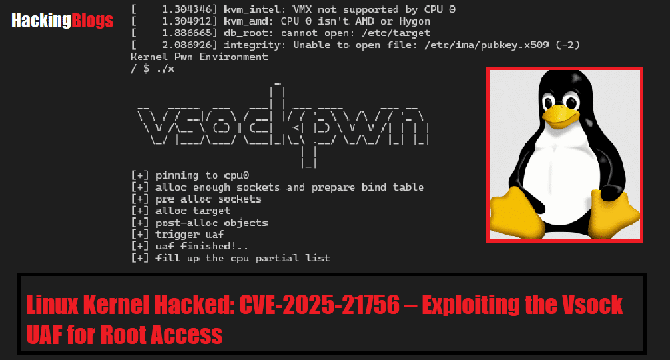Hackingblogs
2M
201

Image Credit: Hackingblogs
Linux Kernel Hacked: CVE-2025-21756 – Exploiting the Vsock UAF for Root Access
- The Linux kernel’s Vsock subsystem has a privilege escalation vulnerability known as CVE-2025-21756, caused by incorrect reference count decrease leading to a Use After Free condition.
- Exploiting the UAF allows attackers to recover a freed vsock object, gain control of execution flow, bypass kASLR, and leak kernel memory.
- The vulnerability required bypassing AppArmor security checks, using side channels like vsock_diag_dump, and employing a ROP chain for root access.
- CVE-2025-21756 affects the Linux kernel's management of virtual sockets, impacting systems reliant on virtual machine connectivity.
- The vulnerability stems from incorrect reference counting on vsock objects, leading to a UAF situation and potential system instability or remote code execution.
- A test case provided by kernel maintainers demonstrates how the UAF vulnerability can be activated.
- Exploitation involves prematurely releasing a vsock object, enabling memory reuse for malicious code insertion and potential privilege escalation.
- An attacker could manipulate kernel memory by taking advantage of a freed vsock object, hence affecting the kernel's internal state.
- The vulnerability could allow attackers to execute arbitrary code in the kernel space and achieve root access, posing a high risk.
- The fix involved enhancing memory management procedures, implementing memory validation checks, and applying hardening strategies to prevent future similar vulnerabilities.
Read Full Article
12 Likes
For uninterrupted reading, download the app